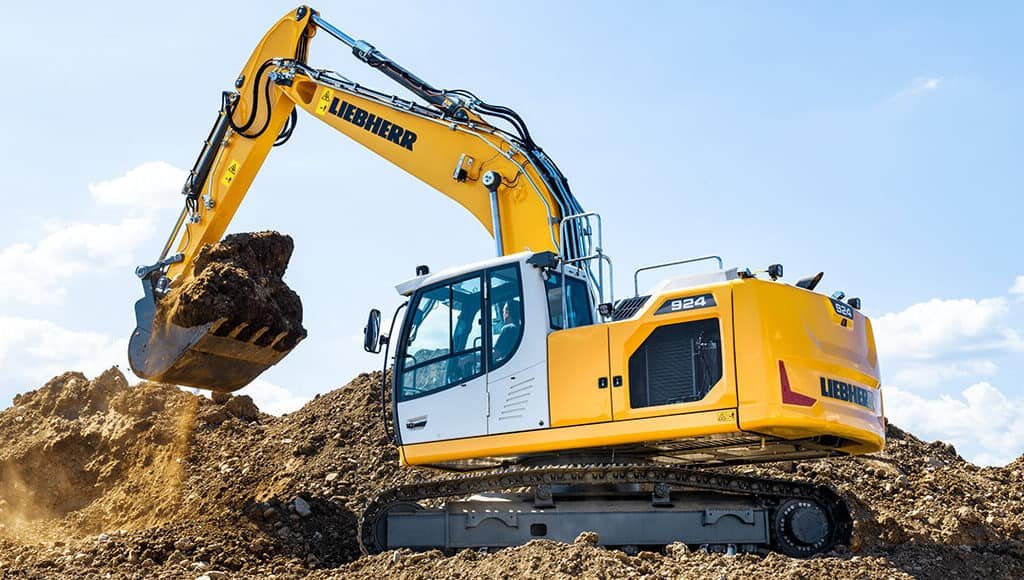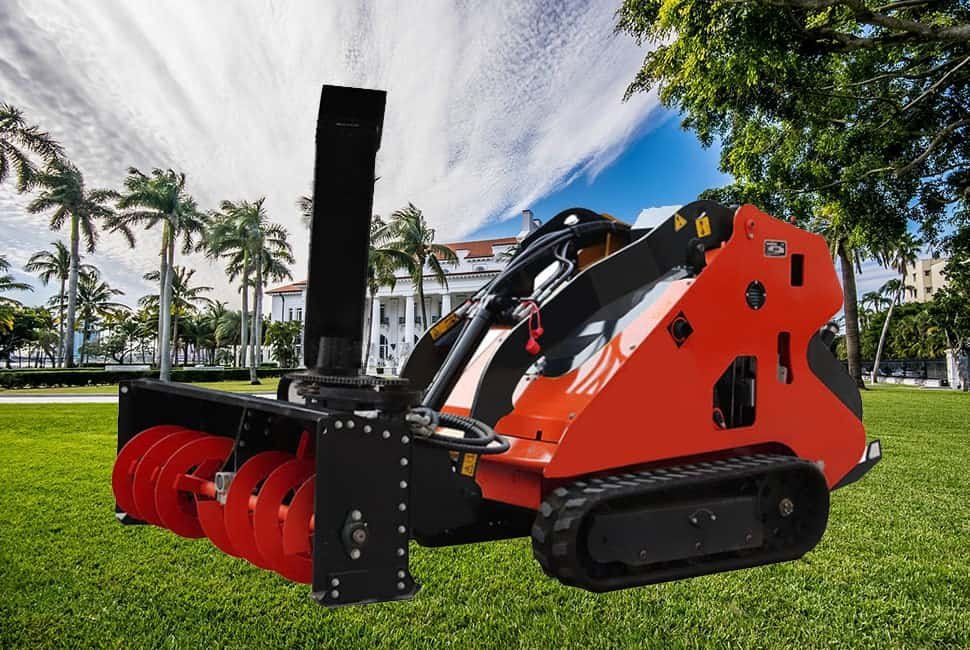Introduction
Are you interested in learning about the parts of a crawler excavator? If so, you’ve come to the right place. In this post, we’ll discuss the different parts of a crawler excavator, including its anatomy and function.
Crawler excavators are commonly used in the construction and mining industries. They are versatile machines capable of digging, lifting, and moving heavy materials. Understanding the different parts of a crawler excavator is crucial for safe and efficient operation.
We’ll start by discussing the undercarriage, which consists of tracks, sprockets, rollers, and idlers. Then, we’ll move on to the upper structure, which includes the cab, boom, arm, bucket, and hydraulic system. Each part plays a critical role in the excavator’s overall performance.
Finally, we’ll provide tips for operating a crawler excavator, such as conducting pre-operation inspections, following proper operating procedures and performing regular maintenance. By the end of this post, you’ll have a solid understanding of the different parts of a crawler excavator and how they work together to get the job done.
The Anatomy Of A Crawler Excavator
If you’re interested in construction or mining, you’ve likely seen a crawler excavator. These powerful machines can dig, lift, and move heavy materials, making them valuable tools on job sites worldwide. In this post, we’ll explore the parts of a crawler excavator, including its undercarriage and upper structure.
Undercarriage
The undercarriage of a crawler excavator is part of the machine that supports and propels it across the ground. It comprises four main components: tracks, sprockets, rollers, and idlers. Next are tracks in our discussion for the parts of a crawler excavator.
Tracks
The tracks of a crawler excavator are made up of individual links connected to form a continuous chain. These links are typically steel and are designed to provide excellent traction on various surfaces. The tracks support the machine’s weight and distribute it evenly across the ground. They also help absorb shocks and vibrations caused by rough terrain. In our discussion about the parts of a crawler excavator, next are the sprockets.
Sprockets
The sprockets of a crawler excavator are located at either end of the machine’s tracks. They drive the tracks forward and backwards, allowing the excavator to move across the ground. The sprockets are typically steel and have teeth that mesh with the track links. As the sprockets turn, they pull the tracks, propelling the machine forward or backwards. Next are rollers in our discussion for the parts of a crawler excavator.
Rollers
The rollers of a crawler excavator are located along the length of the tracks. They support the machine’s weight and provide stability as it moves across the ground. The rollers are typically steel or rubber and rotate as the tracks progress. This rotation helps reduce friction between the tracks and the earth, making it easier for the excavator to move. Next are idlers in our discussion for the parts of a crawler excavator.
Idlers
The idlers of a crawler excavator are located at the front and rear of the machine’s undercarriage. They are responsible for maintaining tension in the tracks, keeping them tight and in place. The idlers are typically made of steel and are adjustable, allowing operators to fine-tune the stress of the tracks to match the terrain they’re working on. Let’s talk about the upper structure of the crawler excavator.
Upper Structure
The upper structure of a crawler excavator is part of the machine that houses the cab, boom, arm, bucket, and hydraulic system. It is responsible for providing the operator with a safe and comfortable working environment and powering the excavator’s movements and attachments. Next is the cab in our discussion for the parts of a crawler excavator.
Taxi
The cab is one of many parts of a crawler excavator. The cab of a crawler excavator is located on the upper structure and provides the operator with a safe and comfortable working environment. It is typically enclosed and equipped with windows, air conditioning, and heating to protect the operator from the elements. The cab also contains controls for operating the excavator and its attachments. Let’s talk about the boom of the crawler excavator.
Boom
The boom of a crawler excavator is a long, vertical arm that extends upward from the upper structure. It is typically made of steel and can be adjusted to different lengths, allowing the operator to reach various heights and distances. The boom is responsible for lifting and moving heavy materials, such as rocks or logs. Let’s talk about the arm of the crawler excavator.
Arm
The arm of a crawler excavator is a horizontal extension attached to the boom’s end. It is typically made of steel and can be adjusted to different angles, allowing the operator to dig in various directions. The arm is responsible for prospecting and scooping materials like dirt or sand. Next is the bucket in our discussion for the parts of a crawler excavator.
Seau
The bucket of a crawler excavator is an attachment that is attached to the end of the arm. It is typically made of steel and can be adjusted to different sizes, allowing the operator to scoop up different amounts of material. The bucket is responsible for moving materials, such as dirt or gravel. Next is the hydraulic system in our discussion for the parts of a crawler excavator.
Système hydraulique
The hydraulic system of a crawler excavator is responsible for power.
In our menu, next is the discussion about the functionality of the parts of the crawler excavator.
The Functions Of Each Part
In our previous post, we explored the anatomy of a crawler excavator, including its undercarriage and upper structure. Now, let’s dive deeper into the functions of each part and how they work together to perform various tasks on a job site.
Undercarriage
The undercarriage of the crawler excavator includes tracks, sprockets, rollers and idlers. Let’s discuss each part one by one.
Tracks
The tracks are the essential parts of a crawler excavator. The tracks of a crawler excavator are responsible for supporting the machine’s weight and distributing it evenly across the ground. They also provide excellent traction on various surfaces, allowing the excavator to move smoothly and efficiently.
Sprockets
The sprockets of a crawler excavator are responsible for driving the tracks forward and backwards. As the sprockets turn, they pull the tracks along, allowing the excavator to move across the ground.
Rollers
The rollers of a crawler excavator are responsible for supporting the machine’s weight and providing stability as it moves across the ground. They rotate as the tracks move, helping reduce friction and making it easier for the crawler excavator to move.
Idlers
The idlers of a crawler excavator maintain tension in the tracks, keeping them tight and in place. Idlers ensure that the machine moves smoothly and efficiently across the ground.
Upper Structure
The upper structure of the crawler excavator includes cabs, boom, arms, bucket and hydraulic system. Let’s discuss each part one by one.
Taxi
The cab of a crawler excavator provides the operator with a safe and comfortable working environment. It is typically equipped with controls for operating the excavator and its attachments, windows, air conditioning and heating to protect the operator from the elements.
Boom
The boom of a crawler excavator extends upward from the upper structure and is responsible for lifting and moving heavy materials, such as rocks or logs. It can be adjusted to different lengths, allowing the operator to reach various heights and distances.
Arm
The arm of a crawler excavator is a horizontal extension attached to the boom’s end. It is responsible for digging and scooping materials like dirt or sand. It can be adjusted to different angles, allowing the operator to explore various directions. Next is the bucket in our discussion for the parts of a crawler excavator.
Seau
The bucket of a crawler excavator is an attachment that is attached to the end of the arm. It is responsible for moving materials, such as dirt or gravel. It can be adjusted to different sizes, allowing the operator to scoop up different amounts of material.
Système hydraulique
The hydraulic system of a crawler excavator is responsible for powering the excavator’s movements and attachments. It uses hydraulic fluid to generate pressure, which is then used to power the excavator’s hydraulic cylinders. These cylinders control the direction of the boom, arm, and bucket, allowing the operator to perform various tasks.
In addition to these parts, several other components work together to make a crawler excavator a powerful and versatile machine. For example, the engine provides the power to drive the hydraulic system and move the excavator across the ground. The cooling system helps keep the engine and hydraulic system from overheating, ensuring the machine can operate for extended periods without any issues.
Tips For Operating A Crawler Excavator
Operating different parts of a crawler excavator can be challenging, but you can run it efficiently and safely with the proper knowledge and skill set. Here are some essential tips to help you operate a crawler excavator effectively:
- Familiarise Yourself with the Controls
- Check the Machine Before Operation
- Plan Your Work and Follow a Routine
- Be Mindful of Your Surroundings
- Use Proper Digging Techniques
- Practice Safe Lifting and Moving Techniques
By following these tips, you can ensure your crawler excavator’s smooth and efficient operation while keeping yourself and those around you safe.
Conclusion
In conclusion, understanding the different parts of a crawler excavator and its functions is crucial for operating it effectively and safely. Each component is vital in the machine’s performance, from the undercarriage to the upper structure. By familiarising yourself with the controls, performing thorough inspections, planning your work, being mindful of your surroundings, and using proper digging and lifting techniques, you can operate a crawler excavator confidently and efficiently.
Always prioritise safety on the job site and take the necessary precautions to prevent accidents and injuries. With practice and experience, you can become a skilled and proficient crawler excavator operator.


